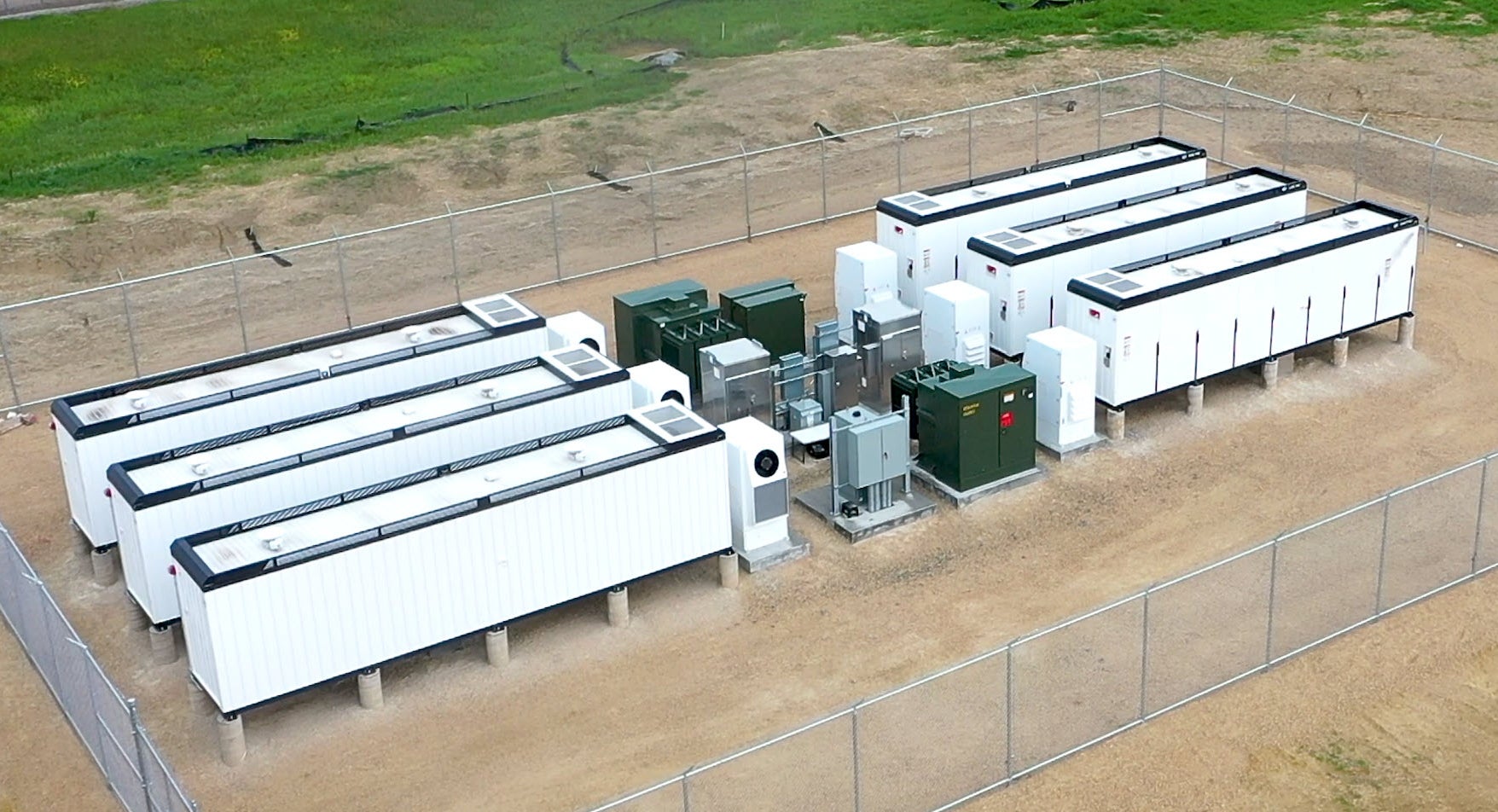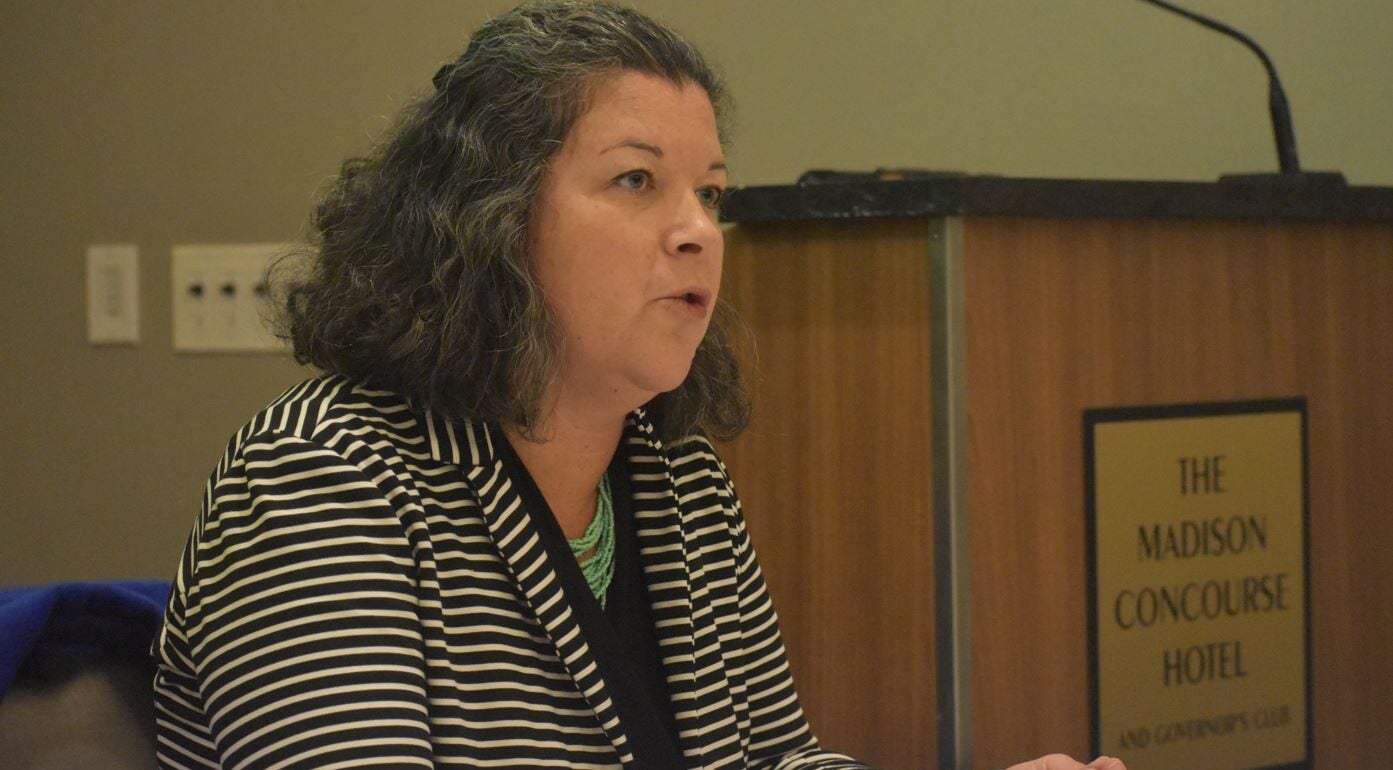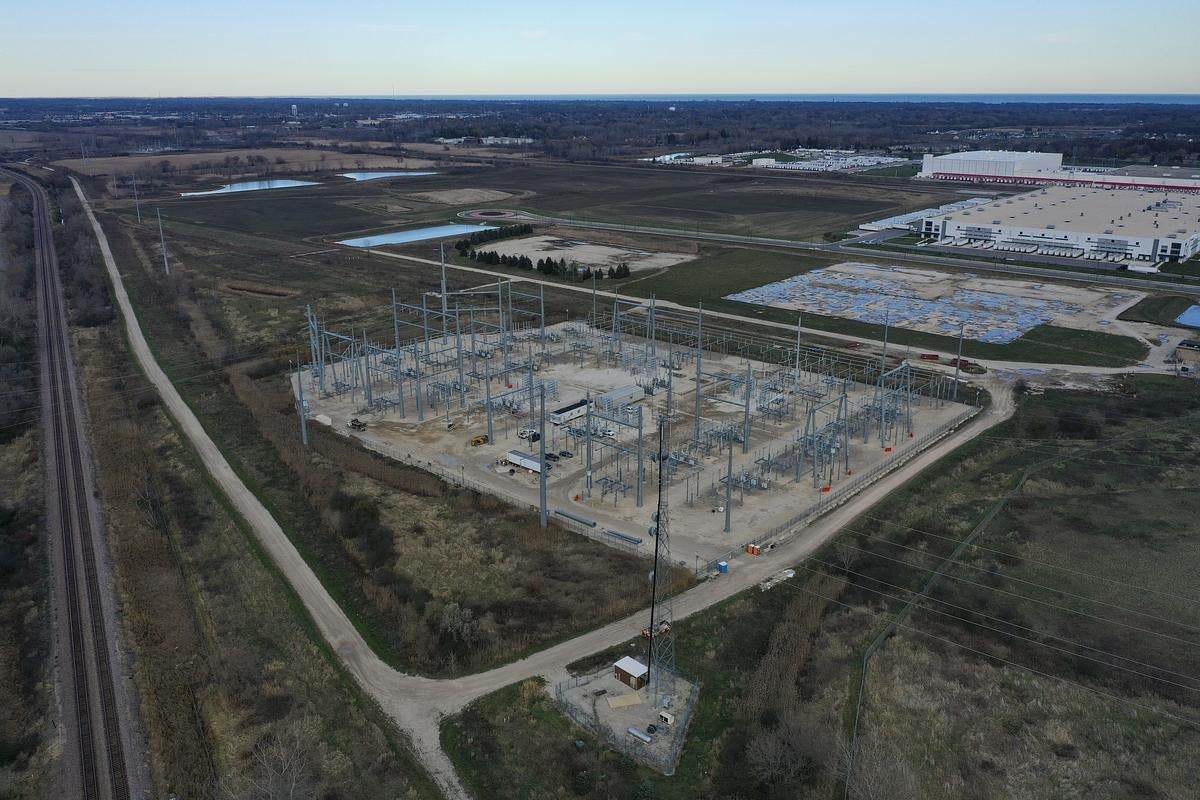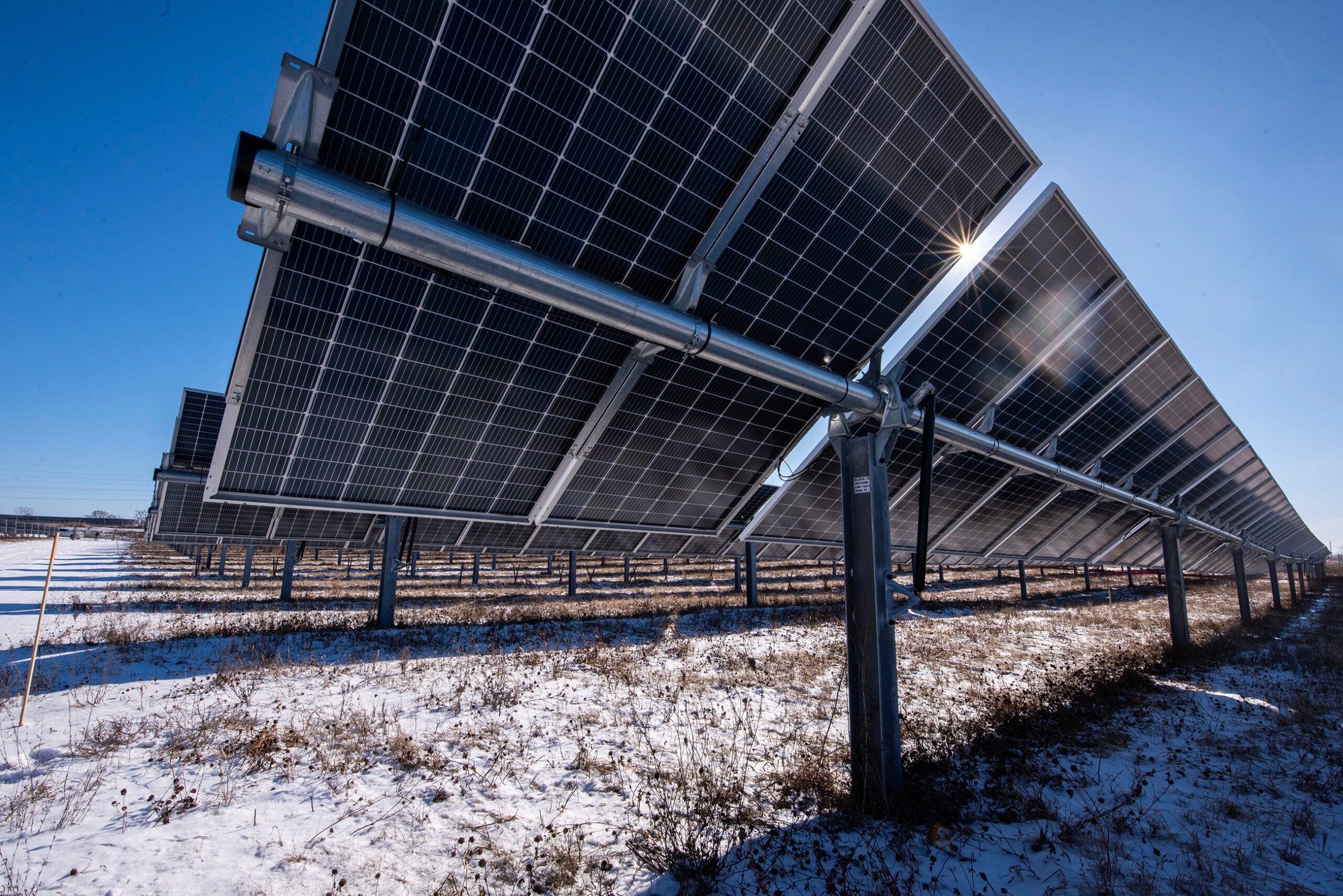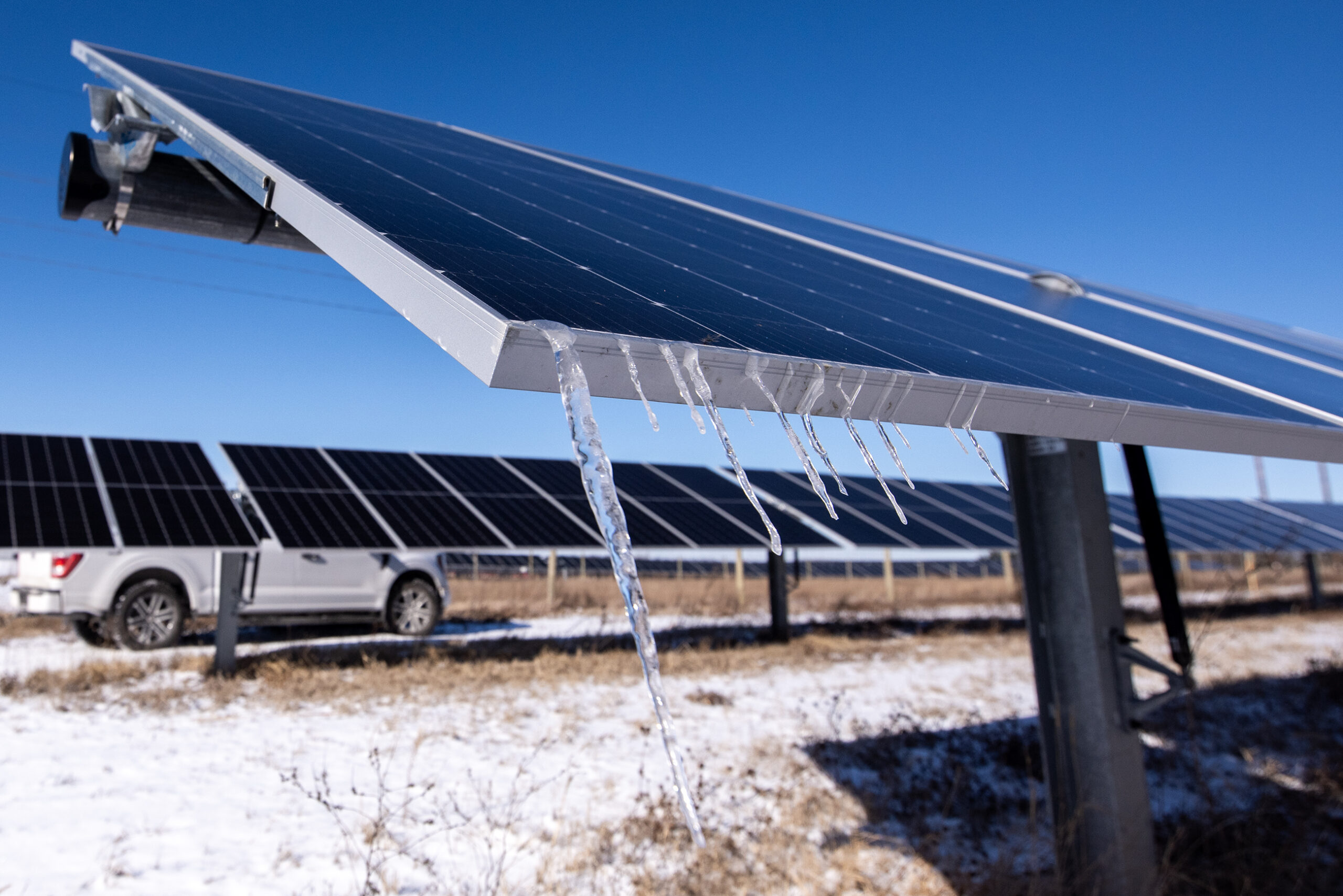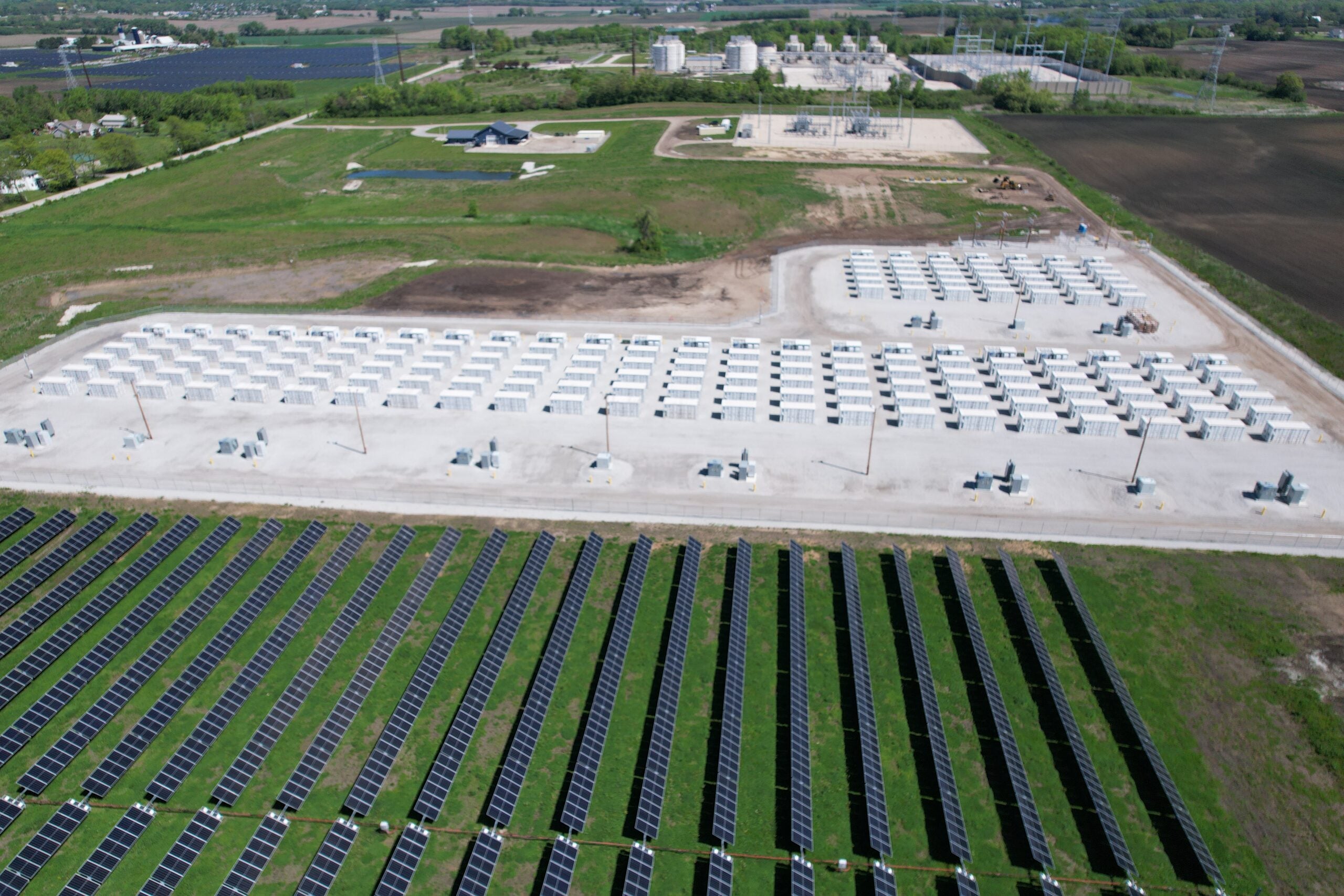As Wisconsin’s utilities continue moving toward clean energy, they’re making big investments in battery storage.
WEC Energy Group, the parent company of Wisconsin Public Service and We Energies, announced Thursday it is working on a pilot project to test a new form of long-duration energy storage at its Valley Power Plant in Milwaukee.
The previous day, Alliant Energy announced plans to develop a battery energy storage system adjacent to the Edgewater Generating Station in Sheboygan, which has an anticipated project cost of $200 million.
News with a little more humanity
WPR’s “Wisconsin Today” newsletter keeps you connected to the state you love without feeling overwhelmed. No paywall. No agenda. No corporate filter.
“We can’t control the wind. We can’t control the sun,” said Brendan Conway, a spokesperson for WEC Energy Group. “We know it’s going to be there most of the time. But when it’s not, we need to make sure that we can keep the lights on. And batteries are so great to continue and expand that clean energy.”
Why are batteries important for renewable energy?
Conway said batteries are crucial to the transition to renewable energy because they can store and discharge energy when the sun goes down or when there’s no wind.
“On a sunny day, when it’s producing more energy than we really need, we’ll then store that energy,” Conway said. “And then when the sun goes down, we can disperse that anytime.”
Tony Palese, a spokesperson for Alliant Energy, said battery storage systems help utilities ensure they have a reliable energy supply regardless of weather conditions.
“These battery storage systems are really designed to maximize the value we’re getting from our renewable energy sources, helping to optimize that energy production and ensuring that we can deliver energy to our customers when they need it,” he said.
Improvements in battery storage and the transition to renewable energy could also help prevent the steady increase of utility rates, said Rick Zimmerman, resource development manager for Alliant Energy.
“We’re getting the sun for free, so we can hopefully stem any increases to our bill,” he said. “You’re probably not going to see a deduction in your energy bill, but hopefully you won’t see a very large increase over the upcoming years.”
Valley Power Plant testing new technology in Milwaukee
WEC Energy Group is partnering with the Electric Power Research Institute and CMBlu Energy to test the new battery system, which could discharge energy for up to twice as long as typical lithium-ion batteries.
“One of our most important goals is to help shape the future of clean energy — testing technologies that could be true game changers,” said Gale Klappa, executive chair of WEC Energy Group, in a statement. “On-demand energy storage is clearly a key component to an energy transition that is affordable, reliable and clean.”
The pilot project is one of the first of its kind in the United States and is planned to begin testing toward the end of the year. The findings of the test program will be shared with the utility industry early next year.
“The results of the pilot will provide key insights on how this innovation can be applied around the country,” Neva Espinzoa, vice president of energy supply and low-carbon resources for the Electric Power Research Institute, said in a statement.
Edgewater Generating Station developing storage system
In Sheboygan, Alliant Energy’s Edgewater Battery Project will draw power from the grid during times of low energy use.
“We will charge that at night, and that now will be available for us to discharge during those peaks of high demand,” Zimmerman said. “We call it in the industry a ‘stand-alone battery.’ It’s not coupled with another energy source. It takes power off the grid at cheap times and puts it back on when it’s needed at what we call kind of more expensive times.”
While the project still needs to be approved by the Public Service Commission of Wisconsin, Alliant Energy anticipates beginning construction next year.
The 99-megawatt battery system will be able to store enough energy to power more than 100,000 homes for four hours, according to the utility.
Alliant plans to have the battery up and running in 2025, within roughly a month of the Edgewater Generating Station being retired, Zimmerman said.
“It makes sense that we’re able to reuse some of the existing infrastructure that was present for our coal generation,” he said. “We’re not reusing it in its entirety. We’re only using 25 percent of the capacity right now. We are working on what the other 75 percent reuse could be.”
Wisconsin Public Radio, © Copyright 2025, Board of Regents of the University of Wisconsin System and Wisconsin Educational Communications Board.

